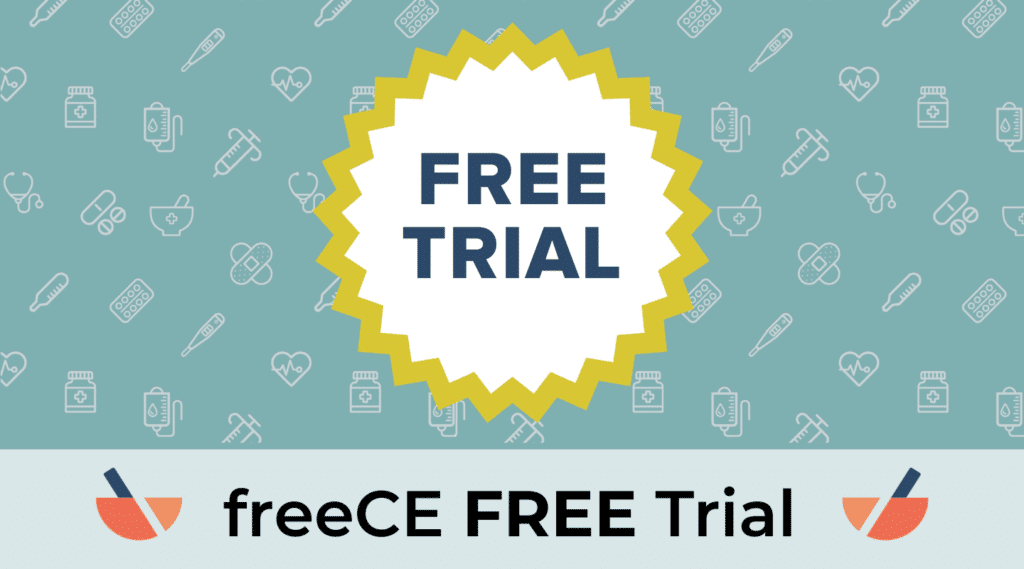Preventing Opioid Use disorder in the pharmacy
As the most accessible healthcare provider, the pharmacist is in a unique position to have a positive impact on the misuse of opioids and opioid overdose deaths. Many patients with opioid use disorder (OUD) may not have easy access to a specialty clinic, but they may have more convenient access to a pharmacy and pharmacist.
That’s why it is critical for pharmacists to understand OUD, how to prevent it, and how to provide support to patients with this disorder. Health care providers such as pharmacists play a huge role in medicaiton therapy management, education, and support for patients with OUD.
What is substance use disorder/opioid use disorder?
Substance use disorder (SUD) is a treatable chronic disease associated with cognitive, behavioral, and psychological symptoms that lead to negative consequences in the patient’s health, social function, and control over the use of substances like alcohol and prescription drugs. SUD can cause issues in all areas of a patient’s life such as health, work, school, and home life and relationships with family, significant others, and friends. Despite these negative consequences, patients with SUD are unable to control the use of these substances.
Stigmatizing terms like abuse, addict, addiction, user, drug abuser, junkie, alcoholic, and former addict should not be used as they may lead to the person with SUD not seeking treatment, feelings of pity, fear, and anger toward people with SUD, and can negatively impact healthcare providers views about people with SUD. Because addiction to opioids is so common, as a culture, we are working toward a more inclusive verbiage
Instead, use non-stigmatizing language that shows your understanding of SUD as a clinically treatable chronic disease. Use person-first language, for example say “person with substance use disorder” instead of “addict”. Avoid stigmatization and bias by using words like: person in recovery, person who previously used drugs, misuse, used other than prescribed, in remission, not currently or actively using drugs.
What are the criteria for diagnosing SUD?
The Diagnostic and Statistical Manual of Mental Disorders, Fifth Edition (DSM-5) diagnostic criteria for SUD contains eleven criteria, groups into physical dependence, risky use, social problems, and impaired control categories. A diagnosis for SUD is made when at least two criteria are met. The severity of SUD is determined by how many criteria a person meets.
The DSM-5 criteria are:
- Taking larger amounts or taking drugs over a longer period than intended.
- Persistent desire or unsuccessful efforts to cut down or control opioid use.
- Spending a great deal of time obtaining or using the opioid or recovering from its effects.
- Craving, or a strong desire or urge to use opioids
- Problems fulfilling obligations at work, school or home.
- Continued opioid use despite having recurring social or interpersonal problems.
- Giving up or reducing activities because of opioid use.
- Using opioids in physically hazardous situations.
- Continued opioid use despite ongoing physical or psychological problem likely to have been caused or worsened by opioids.
- Tolerance (i.e., need for increased amounts or diminished effect with continued use of the same amount)
- Experiencing withdrawal (opioid withdrawal syndrome) or taking opioids (or a closely related substance) to relieve or avoid withdrawal symptoms.
Mild → 2 – 3 symptoms
Moderate → 4 – 5 symptoms
Severe → 6 or more symptoms
What kinds of substances are abused in patients with SUD?
Some examples of substances that may be abused by a patient with SUD are:
- Alcohol
- Cannabis
- Hallucinogens
- Inhalants
- Opioids
- Sedatives, hypnotics, and anxiolytics
- Stimulants
- Tobacco
Each substance abused is considered a separate disorder, for example:
Alcohol – Alcohol Use Disorder
Opioids – Opioid Use Disorder
Stimulants – Stimulant Use Disorder
Patients with SUD may abuse only one or more than one drug. When more than one drug is abused this is called polysubstance use. Polysubstance use can be intentional or unintentional when the substance a person uses is unknowingly mixed with another substance.
HOW IS SUD TREATED?
Like any other treatable chronic disease state there are safe and effective treatments available including therapy and medications. A combination of medication and individual or group therapy is most effective in most patients. An interdisciplinary approach incorporating multiple providers who can address individual problems the patient may be having like a psychiatrist, social worker, and primary care provider can help to individualize treatment of SUD.
Medications can be used to treat symptoms of withdrawal, control cravings, and prevent relapses. Patients with SUD may have other mental health conditions, like depression or anxiety, that need to be treated as well.
What is opioid use disorder and why is it so important?
When the drug of choice in a patient with SUD is opioids, either prescription or illicit, this called opioid use disorder (OUD). OUD is a serious epidemic in the United States, affecting over 2.1 million people nationwide, creating a serious need for pharmacists and other healthcare professionals to understand and address this disorder. Unlike some other substances that may be misused, opioids cause physical dependence in only one to two months. When the opioid is stopped abruptly in a patient who has become physically dependent there are severe symptoms of withdrawal causing the patient to continually seek out opioids to prevent withdrawal.
The symptoms of opioid withdrawal are:
- Pain
- Chills
- Cramps
- Diarrhea
- Dilated pupils
- Restlessness
- Anxiety
- Nausea
- Vomiting
- Insomnia
- Intense cravings
What is the opioid crisis?
The number of opioid related deaths has risen five fold since 1999. In 2020 almost 75% of overdose deaths in the U.S. involved an opioid. Between 2019 and 2020 the death rate from opioids rose by 38%, 17% of those related to prescription opioids. Deaths due to synthetic opioids increased by 56% and heroin by 7%. Every more than 90.
The rise in opioid-related deaths is caused by several factors:
- Increase in prescription opioid misuse and deaths since 1999
- Increase in heroin overdoses since 2010
- Increase in synthetic fentanyl overdoses since 2013
These three factors combined have significantly increased the number of opioid overdose deaths in the U.S. leading to the opioid crisis.
How can I recognize an opioid overdose and what should I do?
Opioid overdose is a life-threatening emergency due to respiratory depression. Recognizing the symptoms of opioid overdose and calling 911 immediately can save someone’s life.
The signs and symptoms of opioid overdose are:
- Skin is pale and feels cold to the touch
- Fingernails or lips are blue or purple
- Vomiting
- Gurgling sounds
- Unarousable
- Unable to speak
- Breathing slows or stops
- Heartbeat slows or stops
- Limp body
If you suspect an opioid overdose, after calling 911, you should administer naloxone if you have it. If the person has stopped breathing or if their breathing is very weak start giving rescue breaths. You may need to readminister naloxone every 2 to 5 minutes if the person does not respond to the first dose. When the person starts to breathe on their own, roll them onto their side to prevent choking.
How is OUD treated?
While OUD can be difficult to address, there are evidence-based treatments that can help. The most effecitve of these treatments is medication assisted treatment (MAT), which combines behavioral counseling along with medications. Medication assisted therapy helps to reduce cravings and opioid use, increases social functioning, treats withdrawal symptoms, and blocks the euphoric effects of opioids. There are three medications approved as medications for opioid use disorder (MOUD)–Methadone, buprenorphine (Suboxone, Subutex), and extended-release naltrexone (Vivitrol). It is important to note that these drugs do not serve as a substitute for the substance the patient was abusing. MOUD are dosed in such a way that the patient does not get high, but they help to reduce cravings and withdrawal symptoms.
MAT remains highly underused in patients with SUD in the U.S. even though it has the potential to help many into recovery. Less than half of privately funded treatment programs offer MAT and in those programs only one third of patients receive it. Most states do not have enough treatment facility capacity to meet the needs of the patients with OUD in that state.
Although drug diversion is a huge problem with prescription opioids, diversion of buprenorphine is uncommon. When diverted, buprenrophine is used to control withdrawal symptoms rather than get high.
What can be done to prevent OUD?
The Secretary of Health and Human Services began an initiative in 2015 aimed at addressing the problem of the prescription and illicit opioid crisis with these five priorities:
- Improve access to treatment and recovery services
- Promote the use of overdose-reversing drugs
- Use public health surveillance to better understand the opioid epidemic
- Support research on pain and addiction
- Advance better practices in pain management
Some interventions that are currently being studied are:
- Vaccines that target opioids in the blood to stop them from reaching the brain and causing a high
- Studies are underway to determine the best way to to provide care to those in need of SUD treatment and how to educate providers on choosing the most appropriate treatments for patients with OUD
- Research on the most effective ways to deliver evidence-based prevention and treatment services to youth before exposure to opioids put them at risk for OUD
How can community pharmacists prevent and treat opioid use disorder?
There are several ways the community pharmacist may be able to have an impact:
Screening, management, and education on the safe use of prescription opioids
As part of their duties in filling and dispensing prescription drugs, pharmacists evaluate the clinical appropriateness of each prescription. Pharmacists are legally required by federal law to ensure that all prescriptions for controlled substances, including opioids, are prescribed for a legitimate medical purpose and that there is a prescriber-patient relationship.
Some things the community pharmacist should look out for:
- Forged or altered prescriptions
- Fills at multiple pharmacies
- Early refills
- Cash payments
- Multiple prescribers (aka doctor shopping)
Frequent and consistent utilization of prescription drug monitoring programs (PDMP data) can help to identify opioid misuse.
Be aware of state specific laws regarding the use of PDMP when filling and dispensing prescriptions for opioids.
With every opioid prescription dispensed, pharmacists should provide education to the patient about opioid safety (harm reduction programs) side effects, proper use, and disposal of any remaining medication. Pharmacies can register with the Drug Enforcement Agency (DEA) to become a registered collection site for unused medications to help reduce access to opioids.
Naloxone distribution
Naloxone is a live-saving antidote to opioid overdose–but it must be available to the public to have an impact. Increasing access to naloxone at community pharmacies without a prescription has been key in increasing naloxone distribution and decreasing opioid overdose deaths. Community pharmacists can offer this life-saving treatment to those interested and provide education on the use of naloxone in opioid overdose. The passage of naloxone access laws that provide legal immunity to prescribers, expand prescribing authority or allow collaborative practice agreements allowing pharmacist prescribing of naloxone, and expanded insurance coverage for naloxone have greatly increased the amount of naloxone dispensed from community pharmacies.
Dispensing medications for opioid use disorder
Community pharmacists play a huge role in the treatment of OUD by having medications for opioid use disorder (MOUD) in stock and providing education to patients when dispensing them. Pharmacists can also establish relationships with providers in the area who treat patients with OUD. Both buprenorphine and methadone are used to treat OUD, however there are limitations on prescribing and dispensing that complicate access for patients.
Buprenorphine can only be prescribed by a DEA-waived buprenorphine physician, nurse practitioner, or physician assistant and less than half of U.S. counties have a buprenorphine prescriber. Additionally, patients with OUD who live in rural areas may have to travel long distances to access a prescriber.
Federal law requires that when used for OUD, methadone is administered by an opioid treatment program (OTP). Most OTPs are located in urban areas, making access to these programs difficult for patients in rural areas. Although there has been an increase in the number of patients with OUD, the number of OTPs has not grown to meet the need.
In Canada, the United Kingdom, and Australia pharmacies are able to dispense and administer MOUD to patients with OUD, greatly increasing access to these lifesaving medications for these patients. Moving to a model like this would not only increase access to care and is estimated to be cost-neutral compared to OTPs.
Support legislation aimed at addressing the opioid epidemic
Pharmacists can be vocal and active in their support for legislation that advocates for expanded access to care for patients with OUD. Such legislation may include things like:
- Increased state or federal funding for OTPs
- An expanded role of pharmacists and pharmacies in prescribing and dispensing medications used for opioid use disorder
- Regulations on insurance coverage for OUD treatments
Pharmacists’ Role In Managing Prescription Medications To Prevent Misuse: What is the corresponding responsibility?
Title 21 of the Code of Federal Regulations Part 1306 describes the corresponding responsibility of pharmacists presented with a prescription for a controlled substance. Prescribers have a responsibility to properly prescribe controlled substances, but pharmacists have an equal corresponding responsibility to ensure that the prescription is prescribed for a legitimate medical purpose by a prescriber acting in their usual course of professional practice.
A prescription that does not meet these requirements is not considered a valid prescription. If that prescription is knowingly filled and dispensed by a pharmacist, they have essentially dispensed a controlled substance without a prescription in violation of the Federal Controlled Substance Act and are subject to penalties described in the act. In order to safeguard their livelihood, career, and license to practice, pharmacists should ensure all prescriptions meet these requirements and document any actions taken in doing so.
What can I do if I suspect substance use disorder?
Community pharmacists can help to refer patients who may have SUD to a behavioral health treatment service. The U.S. Department of Health and Human Services Substance Abuse and Mental Health Services Administration (SAMHSA) has a Behavioral Health Treatment Services Locator that is confidential and anonymous to help find resources in their area. Findtreatment.gov or The National Helpline can be reached 24/7 for treatment referral and information at 1-800-662-4357.
What are illicit opioids?
Traditionally heroin has been the illicit opioid used, however since 2013 synthetic fentanyl-like opioids have also contributed to overdose deaths in the U.S. Illicit fentanyl is cheaper, and more easily synthesized in a lab; due to its potency it is easier to transport smaller amounts of product.
Fentanyl is a synthetic opioid, and is especially problematic in overdose deaths as it is 80 – 100 times more potent than morphine and 50 times more potent than heroin. When synthesized in a lab small changes can be made to the molecule that can increase or decrease potency. This means that small amounts of illicit fentanyl can cause overdose deaths even in people who use heroin. Illicit fentanyl has been found mixed with many illicit drugs such as heroin, cocaine, illicit methamphetamines, and counterfeit opioid tablets.
Sources:
- https://americanaddictioncenters.org/fentanyl-treatment/similarities
- https://www.pbs.org/newshour/health/fentanyl-deadlier-heroin-single-photo
- https://www.dea.gov/factsheets/heroin
What guidance is provided by the CDC?
In 2016 the Centers for Disease Control and Prevention (CDC) provided the CDC Guideline for Prescribing Opioids for Chronic Pain – United States, 2016 in response to the sharp increase in opioid deaths. The guideline was meant for primary care providers who prescribe opioids to adults for chronic pain outside of cancer treatment, palliative care, and end-of-life care.
There are twelve recommendations made in the guideline, grouped into categories providing guidance on when to initiate, selection, dosage, follow-up, and discontinuation, and assessing risk.
Determining When to Initiate or Continue Opioids for Chronic Pain
- Nonpharmacologic therapy and nonopioid pharmacologic therapy are preferred for chronic pain. Clinicians should consider opioid therapy only if expected benefits for both pain and function are anticipated to outweigh risks to the patient. If opioids are used, they should be combined with nonpharmacologic therapy and nonopioid pharmacologic therapy, as appropriate.
- Before starting opioid therapy for chronic pain, clinicians should establish treatment goals with all patients, including realistic goals for pain and function, and should consider how therapy will be discontinued if benefits do not outweigh risks. Clinicians should continue opioid therapy only if there is clinically meaningful improvement in pain and function that outweighs risks to patient safety.
- Before starting and periodically during opioid therapy, clinicians should discuss with patients known risks and realistic benefits of opioid therapy and patient and clinician responsibilities for managing therapy.
Opioid Selection, Dosage, Duration, Follow-Up, and Discontinuation
- When starting opioid therapy for chronic pain, clinicians should prescribe immediate-release opioids instead of extended-release/long-acting (ER/LA) opioids.
- When opioids are started, clinicians should prescribe the lowest effective dosage. Clinicians should use caution when prescribing opioids at any dosage, should carefully reassess evidence of individual benefits and risks when increasing dosage to =50 morphine milligram equivalents (MME)/day, and should avoid increasing dosage to =90 MME/day or carefully justify a decision to titrate dosage to =90 MME/day.
- Long-term opioid use often begins with treatment of acute pain. When opioids are used for acute pain, clinicians should prescribe the lowest effective dose of immediate-release opioids and should prescribe no greater quantity than needed for the expected duration of pain severe enough to require opioids. Three days or less will often be sufficient; more than seven days will rarely be needed.
- Clinicians should evaluate benefits and harms with patients within 1 to 4 weeks of starting opioid therapy for chronic pain or of dose escalation. Clinicians should evaluate benefits and harms of continued therapy with patients every 3 months or more frequently. If benefits do not outweigh harms of continued opioid therapy, clinicians should optimize other therapies and work with patients to taper opioids to lower dosages or to taper and discontinue opioids.
Assessing Risk and Addressing Harms of Opioid Use
- Before starting and periodically during continuation of opioid therapy, clinicians should evaluate risk factors for opioid-related harms. Clinicians should incorporate into the management plan strategies to mitigate risk, including considering offering naloxone when factors that increase risk for opioid overdose, such as history of overdose, history of substance use disorder, higher opioid dosages (=50 MME/day), or concurrent benzodiazepine use, are present.
- Clinicians should review the patient’s history of controlled substance prescriptions using state prescription drug monitoring program (PDMP) data to determine whether the patient is receiving opioid dosages or dangerous combinations that put him or her at high risk for overdose. Clinicians should review PDMP data when starting opioid therapy for chronic pain and periodically during opioid therapy for chronic pain, ranging from every prescription to every 3 months.
- When prescribing opioids for chronic pain, clinicians should use urine drug testing before starting opioid therapy and consider urine drug testing at least annually to assess for prescribed medications as well as other controlled prescription drugs and illicit drugs.
- Clinicians should avoid prescribing opioid pain medication and benzodiazepines concurrently whenever possible.
- 12. Clinicians should offer or arrange evidence-based treatment (usually medication-assisted treatment with buprenorphine or methadone in combination with behavioral therapies) for patients with opioid use disorder.
Dowell D, Haegerich TM, Chou R. CDC Guideline for Prescribing Opioids for Chronic Pain — United States, 2016. MMWR Recomm Rep 2016;65(No. RR-1):1–49. DOI: http://dx.doi.org/10.15585/mmwr.rr6501e1
Continuing Education For Pharmacists To Spot Signs of Prescription Medication Abuse – Why freeCE
It’s critically important for pharmacists to understand the multiple facets of pain management in order to help combat the opioid crisis, and continuing education on this topic can help meet this need. freeCE has many live and on-demand programs that cover pain management, opioid medications, non-opioid treatments, substance use disorder, drug diversion, and more. If you’d like unlimited access to freeCE’s activities covering these subjects and the rest of our catalog, subscribe to a freeCE membership. These packages make it easy to stay up-to-date on the most important information you need for your practice and meet your state’s CE requirements.
If you are looking for more in-depth education on pain management, freeCE has multiple specialized training opportunities from pain expert Mark Garofoli designed to equip you with the information you need. Our Pain Management Specialty Pharmacist series covers this topic from multiple angles, including Managing Opioids, Non-Opioid Pain Management, and Ancillary & Adjunctive Pain Management. If you are looking to understanding SUD more specifically, the Substances of Abuse Pharmacist Certiticate covers this topic in-depth.
freeCE Gold and Silver members receive discounts on all specialty certificates, as well as unlimited access to CE activities. If you’d like unlimited access to all of freeCE’s specialized training opportunities, explore freeCE’s Platinum membership, where you can register for all four of Dr. Garofoli’s pain certificates, as well as training from our other faculty covering diabetes, integrative pharmacy, and more.






